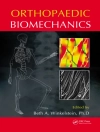This book offers an overview of the latest advances in the epidemiological, pathophysiological, diagnostic and therapeutic aspects of secondary hypertension, provided by a group of the most highly respected European experts in this field. It is common belief that secondary forms of hypertension are rare, although in 95% of patients the cause of high blood pressure is unknown – euphemistically referred to as “essential”. There is increasing evidence from epidemiological studies that the prevalence of secondary hypertension is much higher than previously thought, accounting for 20%-25% of all hypertensive patients. There are additional, very good reasons for identifying those patients with secondary hypertension: firstly, they are exposed to a greater risk of suffering major cardiovascular events than patients with essential hypertension who have the same blood pressure level, and for this reason require particular care. Secondly, these patients can be relieved of a lifetime of pharmacological therapy or, at least, have a chance to be treated with more specific and effective medications. A high degree of clinical skill is required to recognize the often vague and subtle symptoms and signs that characterize patients with secondary hypertension, and clinicians need to fully comprehend the mechanisms responsible for the development and maintenance of high blood pressure. Shedding new light on a complex area of cardiovascular medicine, the book enables readers to better treat affected patients.
विषयसूची
1. Renal parenchimal disease.- 2. Atherosclerotic renovascular disease.- 3. Fibromuscular Dysplasia.- 4. Primary aldosteronism.- 5. Familial aldosteronism.- 6. Monogenic forms of hypertension. - 7. Pheochromocytoma – Paraganglioma.- 8. Cushing disease.- 9. Vascular disease.- 10. OSAS.- 11. Drug induced hypertension.- 12. Acromegaly.- 13. Organ damage in secondary hypertension. - 14. Hemodynamics and CV risk in secondary hypertension.
लेखक के बारे में
Alberto Morganti joined Professor Alberto Zanchetti’s group at the Policlinico Hospital in Milan after his degree, and was was introduced to the pathophysiological and clinical aspects of hypertension. He then spent two years working as a research associate and clinical fellow at the Cardiovascular Hypertension Center-Cornell University Medical College in New York Hospital under the guidance of professor John Laragh, and upon his return to Milan he became responsible of the radioimmunoassay laboratory in his original institution, where he conducted several multicenter international studies on the methodological aspects of renin measurements. He has since expanded his research interests to include secondary forms of hypertension and, in particular, to the diagnosis and treatment of renovascular hypertension. Professor Morganti was director of the Hypertension Center at the San Paolo Hospital and San Giuseppe Hospital. Moreover he served as treasurer of the International Society of Hypertension from 2000 to 2008 and as president of the Italian Society of Hypertension from 2009 to 2011.
Enrico Agabiti-Rosei has been a professor of internal medicine at the University of Brescia (Italy) since 1990. He is director of the Clinica Medica at the University of Brescia and chairman of the Department of Internal Medicine, Azienda Spedali Civili, University Hospital of Brescia, Italy. He graduated in medicine and surgery at the University of Perugia and specialized in cardiology and internal medicine at the University of Pisa. He has lectured internationally on topics related to hypertension and cardiovascular diseases and has been responsible for organizing official workshops and symposia for the European Society of Hypertension, and of the European Society of Cardiology. He was president of the European Society of Hypertension and the Italian Society of Hypertension, and chairman of the European Society of Cardiology’s working group Hypertension and the Heart. He was also a member of the European Society of Cardiology Science Council and the European Council for Cardiovascular Research’s Executive Committee. He received the ESH Peter Sleight Award in 2011.
Franco Mantero graduated cum laude in Medicine at the University of Padua Medical School. He then specialised in Endocrinology at University of Florence, in Radiology, Nephrology and Internal Medicine at the University of Padua. He has been scientific secretary of several International Meetings on Adrenal and Pituitary and Endocrine Hypertension, editor of several books about special Issue on adrenals and hypertension. Memeber of many scientifical internation societies, he is also in the editorial board of many international journals and published more than 500 papers.
Franco Mantero graduated at the University of Padua and specialized in Endocrinology, Nephrology, Internal Medicine and Nuclear Medicine. He trained at the UH of Geneva (Switzerland) and at the CRC of the UCSF(USA). After his return to Padua he established a national referral center for adrenal diseases. His primary research interests are mineralocorticoid hypertension, Cushing’s Syndrome, adrenal tumors. He has been professor of Endocrinology and chair of the Division of Endocrinology of the Padua University Hospital. He organized International Meetings on Adrenal and Endocrine Hypertension, and lectured in Meetings of the European Society of Endocrinology, Endocrine Society(USA), International Society of Endocrinology, and European Society of Hypertension. He is editor of several books on adrenals and hypertension. Member of the steering committee of many scientific societies (including International Society of Endocrinology, International Aldosterone Conference) and co-founder of the European Study Group on Adrenal Tumors (ENSAT). He is also in the editorial board of many international journals and published more than 500 papers.












